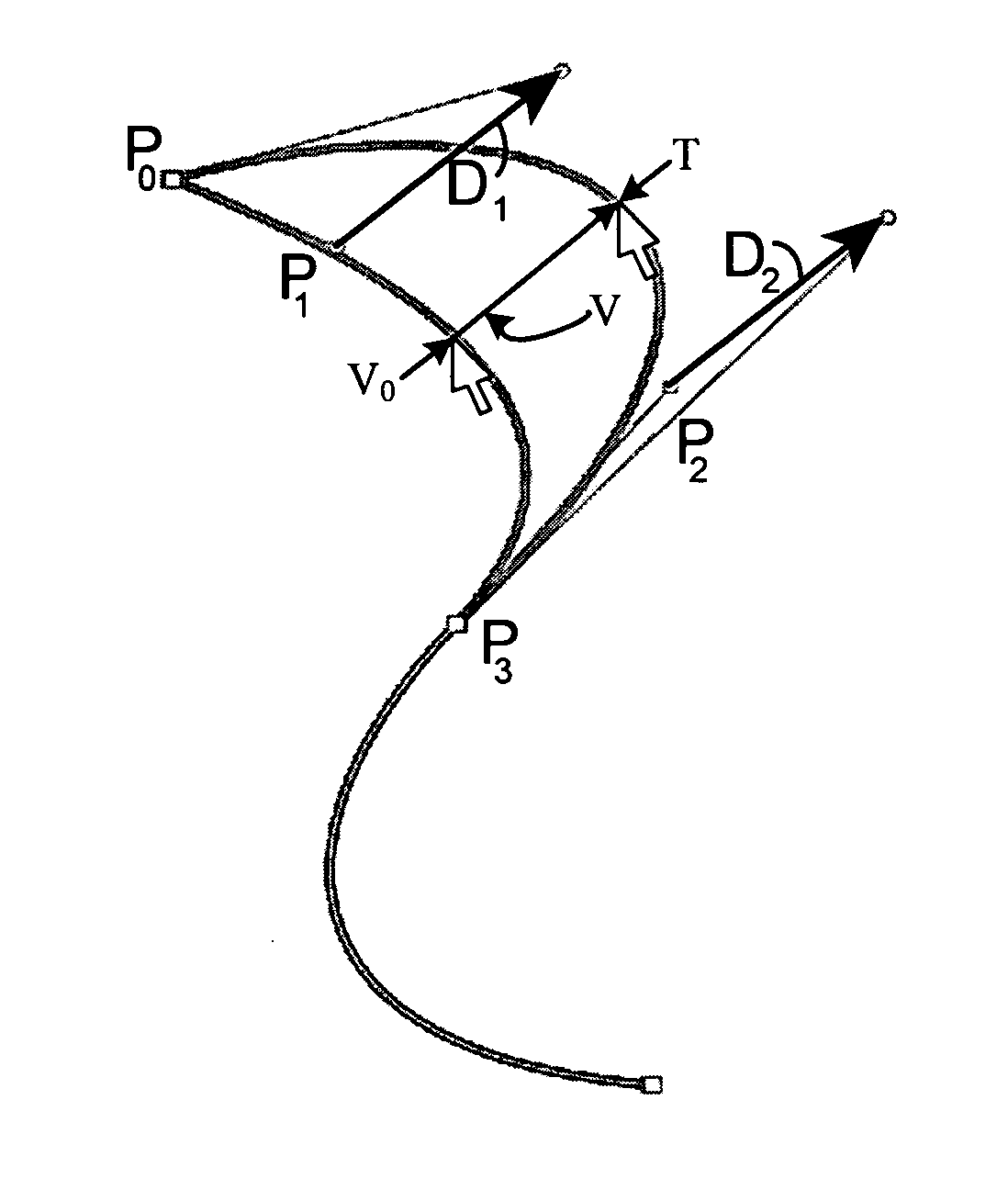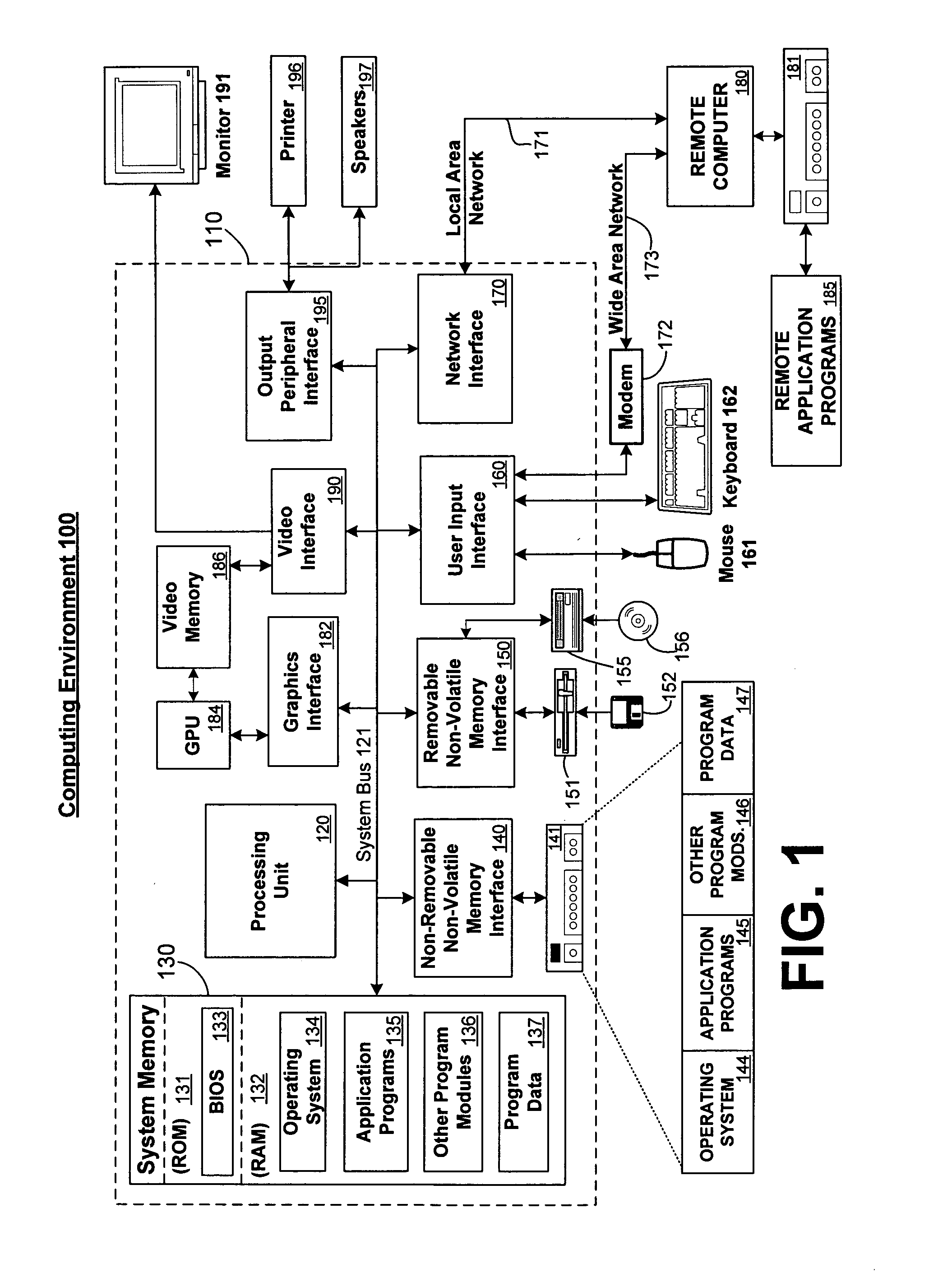Using constrained optimization in curve editing
a curve and curve technology, applied in computing, instruments, drawing from basic elements, etc., can solve the problems of inordinately large curve changes, inability to meet expectations, and difficulty in reshaping the curve in this manner, and achieve the effect of more design productivity
- Summary
- Abstract
- Description
- Claims
- Application Information
AI Technical Summary
Benefits of technology
Problems solved by technology
Method used
Image
Examples
Embodiment Construction
Overview
[0011] A user of a vector drawing tool has several implicit expectations of a click and drag edit, namely:
[0012] The targeted point should follow the mouse pointer during the drag.
[0013] The edit should be local: points on the curve far from the edit point should not be affected.
[0014] The edit should be stable: small movements of the mouse should not result in large changes to the curve.
[0015] The edit should be intuitive in that the shape of the curve should only be distorted as much as necessary for it to meet the above requirements.
[0016] A curve frequently used as the underlying representation in vector drawing tools is the piecewise cubic Bézier spline. The invention described herein is independent of the underlying curve representation; however, because the piecewise cubic Bézier spline is one of the most commonly used representations, descriptions of the method will be given in terms of this representation. It will be understood that the method may be applied ...
PUM
 Login to View More
Login to View More Abstract
Description
Claims
Application Information
 Login to View More
Login to View More - R&D
- Intellectual Property
- Life Sciences
- Materials
- Tech Scout
- Unparalleled Data Quality
- Higher Quality Content
- 60% Fewer Hallucinations
Browse by: Latest US Patents, China's latest patents, Technical Efficacy Thesaurus, Application Domain, Technology Topic, Popular Technical Reports.
© 2025 PatSnap. All rights reserved.Legal|Privacy policy|Modern Slavery Act Transparency Statement|Sitemap|About US| Contact US: help@patsnap.com



